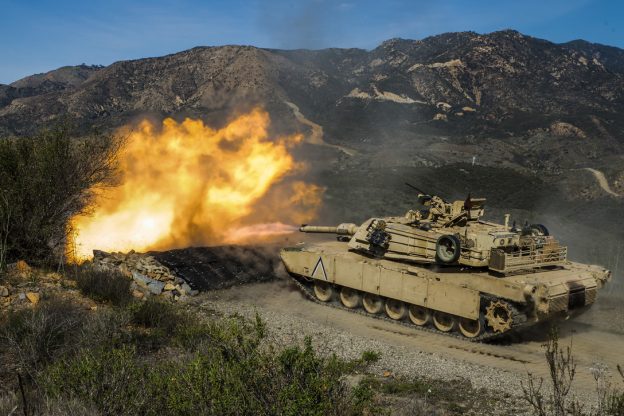Under the Constitution, (Article 1, Section 7) the House of Representatives has the responsibility for originating all federal spending. It is a duty that has been performed very poorly.
The mammoth national debt, now standing at over $23 trillion, can be directly attributable to two factors. First, the inappropriate manner in which the Lower House of Congress performs its most important responsibility. The interest of the American people comes in a distant second to the blatantly political motivations of individual Representatives.
Consider a crucial area that is the key function of Washington: defense. To get the votes of many leftist representatives for adequate military funding, concessions to wasteful and unsuccessful welfare-type programs must be made. Many of those programs are little more than excuses to give patronage jobs to political hangers-on.
But there is another wasteful House procedure that harms key national interests and causes wasteful spending: failing to arrive at a consensus budget on a timely basis, Washington indulges in the practice of “Continuing Resolutions” (CRs) and “Continuing Appropriations.” The official definition of this is “Legislation in the form of a joint resolution enacted by Congress, when the new fiscal year is about to begin or has begun, to provide budget authority for Federal agencies and programs to continue in operation until the regular appropriations acts are enacted.”
Rob Wittman, a Virginia Republican, has sounded an alarm about the harm caused by CRs. “In the age of procrastination and irresponsible spending in Washington, continuing resolutions have become a comfortable fall back for Congress. Instead of buckling down, skipping the archaic breaks, and getting spending bills done in time for measured debate, lawmakers look to last-minute, stop gap measures to fund the federal government. The last time Congress was able to maintain regular operations without a continuing resolution was in 1996—two decades ago…continuing resolutions are a short-sighted and irresponsible way to fund important programs…
“With yet another continuing resolution—we’re asking our troops to take on more risk with fewer training hours, longer deployment times, and equipment that is outdated and unreliable. Just yesterday, Air Force Secretary Deborah Lee James said that a long-term continuing resolution would “limit training and readiness accounts across the board for the total force.” In the context of national security, stop gap measures deplete our forces, prevent planning, and can cost lives.
“The government has a spending problem. We all know it. And continuing resolutions exacerbate that problem. The CR rules prevent agencies from recruiting or hiring new staff and implementing new programs (even necessary ones, like transportation projects), AND they prevent departments from cutting programs that are wasting taxpayer money. … Stop gap measures kick the can down the road, create uncertainty for agencies and employers, and negatively impact communities and families.
“If the continuing resolution has a handmaiden, it’s the backroom deal. As public servants, we’re supposed to be responsible stewards of taxpayer money, and that means that we need an open and transparent process. It means we need time for measured and deliberate debate. That’s the way our system was designed, and that’s the way it’s supposed to work. Instead, deals are cut behind closed doors, and the public is left entirely in the dark. Allocations are made for pet projects, and loopholes let certain actors ‘skirt the rules.’
“The continuing resolution is the quintessential ‘must pass’ legislation. It’s the reason that everyone starts shouting ‘“government shutdown.’ … Ultimately, continuing resolutions end up looking like a kind of legislative Frankenstein: lots of unrelated measures stitched together without any real deliberation, debate, or consideration.”
| With the federal government deeply divided, there is a danger that no agreement on vital budget areas wil come about. As Rep. Wittman noted the impact on national security will be significant. Reps Mac Thornberry (R-TX), Kay Granger (R-TX) and Steve Womack (R-AR) issued a stark warning to their colleagues today on the damage a full-year continuing resolution would do to America’s military. “Across the political spectrum, folks have rightfully praised our military and intelligence professionals for taking a barbaric terrorist off the battlefield this past week. But it would be wrong to praise them with our lips and damage them with our votes. History teaches us that America will be tested in the coming weeks. Our men and women in uniform will have to face that challenge abroad while the support for their training, weapons, and families remains uncertain here at home. We owe them more and we must do better,”Thornberry said. “We are facing global threats to our interests and our allies. Our highest priority should be keeping the government functioning and the Defense Department fully funded. We cannot afford to short-change our troops or create unnecessary uncertainty for the Department of Defense,” Ranking MemberGranger added. “When Congress fails to provide stable funding, we hinder our warfighters and neglect our constitutional duty of providing for the common defense. It’s a clear reflection of the broken budget and appropriations process that has plagued this chamber for far too long. We can’t continue to hold our military hostage – and anything less than sustained, predictable appropriations will damage national security. …“ Womack said. |
The three Republicans issued a fact sheet outlining the damage:
According to the Congressional Research Service, the Pentagon has “started the fiscal year under a CR for 13 of the past 18 years.” With the exception of FY19, DOD has started every year since 2010 under a CR. The Navy has calculated that they wasted $4 billion between 2011 and 2017 as a result of CRs.
CRs are wasteful. They harm our troops and America’s National Security. Every day we go without passing a DOD funding bill makes it more and more likely that our troops—who will almost certainly be tested in the coming weeks—will face a full-year CR, with all the damage and uncertainty these stop-gap measures inflict. That is unacceptable. Here is some of the very real damage a full-year CR will do.
Military Personnel: In the wake of news reports of service members and their families living in inadequate and dangerous family housing, the Army would be prevented from building 4,400 new dwellings and forced to delay repair on another 269 homes. Navy families’ moves will be curtailed, bonuses and awards will be eliminated, and the overall size of the Navy will have to be reduced.
Pilot Shortage: A year-long CR will put additional pressure on our Air Force pilots by perpetuating a critical pilot shortage. The Air Force is short 2,100 pilots, putting an additional burden on those serving now. As former Secretary of the Air Force Heather Wilson put it, “with 2,000 pilots short, it’ll break the force.” A year-long CR will cut $123 million from undergraduate flight training, as well as cutting contractor instructor pilots. A new maintenance training center won’t open and maintenance for the aging fleet of training aircraft will be delayed.
Ship Operations: Following the fatal accidents aboard the USS McCain and USS Fitzgerald that were attributed in part to training issues, a CR would force the Navy to cancel 14 ship maintenance periods, cancel ship underway training, and limit operations of the deployed Fleet.
Navy Flying missions: A CR would cause the shutdown of non-deployed Navy aviation, limiting flight training in the US to only those units about to deploy. It would also temporarily eliminate our nation’s ability to surge additional Navy forces in times of conflict. Finally, the Navy would incur additional costs to regenerate and recertify flying operations for non-deployed Navy aviation units. Munitions Shortage: The fight against al Qaeda and ISIS depends on precision guided munitions. Obama-era spending cuts and repeated CRs forced the Army and Air Force to use these munitions faster than they could replace them, creating a critical shortage. A year-long CR would perpetuate this problem. It would significantly reduce the number of munitions the Air Force is able to buy in the next fiscal year. When the Army and Air Force are able to resume rebuilding the stockpile, it is likely these weapons will be more expensive and much of the progress made over the past two years in ramping up the munitions industrial base will be erased. Navy will be unable to expand needed production increases in Tomahawk missiles, torpedoes, and other critical weapons. Leaves Our Troops Vulnerable To Peer Competitors: The Pentagon needs to field important technologies that protect our troops from peer competitors. These include a GPS-like system that is impervious to hacking, spoofing, and jamming, mobile air and missile defense systems, long range precision munitions such as hypersonics and extended range artillery, next generation combat vehicles, advanced helicopters and aircraft, improved night vision devices, and improved sensor and network technology. A year-long CR would prohibit development of unmanned surface vessels, future ship designs, and artificial intelligence development. A delay of a year or more on these systems could make our troops vulnerable and erode our competitive advantage for years to come.
Disaster Recovery: Key military installations like Tyndall and Offutt Air Force Bases, China Lake, and Camp Lejeune have been severely damaged by natural disasters in the past year. Funds urgently needed to repair these facilities so that they can resume their critical national security missions will not be available under a year-long CR. Delaying disaster recovery will hurt critical missions, including F22 training, intelligence and surveillance, and Navy testing.


